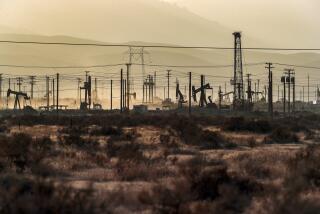A carbon dioxide escape hatch
Among the more speculative of the proposed solutions to global warming is the notion of capturing the carbon dioxide emissions from coal-fired power plants and pumping them underground. Still, the collapse last week of one of the nation’s most high-profile experiments with so-called carbon capture and sequestration technology is bad news for future generations and further evidence of the need for climate legislation.
American Electric Power, one of the biggest utilities in the U.S., announced Thursday that it was tabling its plans to complete a commercial-scale carbon capture system at a coal-fueled plant in West Virginia — despite the fact that up to half of the project’s $668-million cost would have been covered by the U.S. Department of Energy. It’s a decision that’s likely to be repeated by other U.S. investors studying the technology, because in the absence of a climate bill that puts a price on carbon, it doesn’t make much financial sense to pursue it.
Although small-scale demonstration projects have shown that carbon dioxide can be safely stored in underground repositories, it’s still very unclear whether this is a realistic way to dispose of the vast amounts of carbon emitted by power plants, the nation’s biggest source of greenhouse gas emissions. Subterranean reservoirs are hard to map and gases could leak to the surface, with potentially deadly consequences. Further, it takes a lot of power to capture carbon, which means the industry would have to burn even more coal (up to 35% by some estimates) than it does today to generate the same amount of electricity. That would worsen the non-climate-related negative impacts of burning coal, such as mercury pollution and the environmental damage wrought by coal mining.
But just because the technology isn’t ready doesn’t mean it is without potential. Over the long term, the energy penalty of carbon capture might be reduced or eliminated and the geological questions might be resolved. American Electric Power’s experiment at its Mountaineer plant, which would have captured 90% of the emissions from the generation of 235 megawatts of electricity, was among the most advanced projects of its kind in the world. Its demise represents a serious setback for an idea that’s worth further study.
We can’t fault executives at the company for giving up. State regulators refused to allow them to raise electricity rates to pay for the Mountaineer project. The “cap-and-trade” climate bill, which would have funded such clean-power projects by allowing utilities that reduced their emissions to sell carbon credits, died in 2009 and stands little chance of being revived in the current political and economic environment. We hope that changes before the nation, and the world, miss the chance to develop a potentially important weapon in the fight against an impending climate crisis.
More to Read
A cure for the common opinion
Get thought-provoking perspectives with our weekly newsletter.
You may occasionally receive promotional content from the Los Angeles Times.










